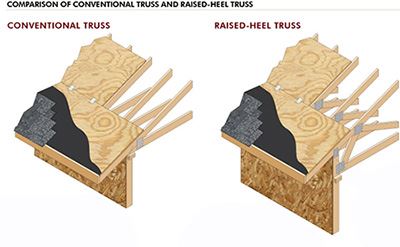 |
Energy Efficiency Ideas
|
New from APA: Raised Heel Truss Construction Guide
Raised-heel trusses, also known as energy-heel trusses, deliver cost-effective energy performance, especially when used with continuous plywood or OSB sheathing. Framing with raised-heel trusses and continuously sheathing exterior walls improves structural and energy performance and offers many savings that benefit both the builder and the homeowner. |
